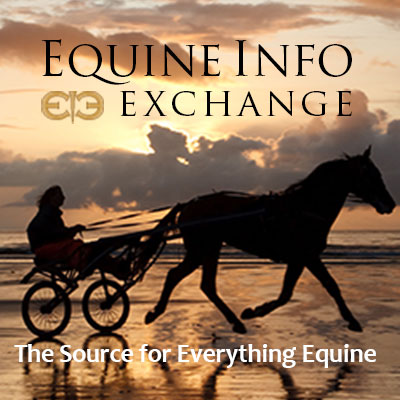Tack & Farm
Our Tack & Farm section features an Apparel section to find both practical and fashionable riding attire. If you ride English & Western or Race, many sources are available in the Tack section.
Building a barn? Need an architect for your equine dream home? Find one in Barns & Stalls.
Have a hungry horse? Of course you do! Find a place to buy your feed and tuck your horse in at night in the Bedding & Feed section. Looking for a place to keep your horse? You can find it in the Horse Boarding section. Keep your horse happy and beautiful with resources in our Grooming section.
Traveling? Find a Shipping company or Horse Sitting service if your horse is staying home!
Running and maintaining a farm or stable is a continuous effort, and to help find products or tools you need, please see our Equipment, Fencing and Management Tools sections.
Seeking Services? Find financial and tax expertise in our Accounting section. Companies who will help protect your investment are found in the Insurance section. For those who want legal advice about purchasing, liability, and other issues, please look at the Equine Law section to find an expert. Build and promote your business with teams from Marketing / Videography / Web Design.
Do we need to add more? Please use the useful feedback link and let us know!
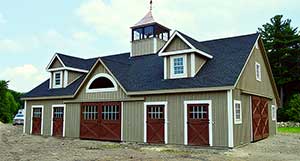
by Nikki Alvin-Smith
There are many decisions to make when purchasing a new barn and one of the less thought about is often the barn color.
The selection of the perfect exterior color for the new barn at your property doesn’t just hinge on what already exists structure wise in the vicinity that it should complement. Color can also affect the use of the building and the comfort of your horses.
Originally horse barns and agricultural buildings in general, weren’t painted at all. In the North-Eastern U.S.A. early settlers were just happy to have wood to build the barn and have their shelter for grains and livestock completed. Naturally the weather took its toll on the untreated wood and by the 1700’s farmers were figuring out they needed to provide some sort of protection for the structure from rain, sun and snow.
We have all seen the traditional red/brown barns across the U.S.A. countryside. How did this color become so common? Barns in Scandinavia and Europe in general, were painted in rusty brown/red colors. Perhaps to create the appearance of red brick, which was considered a building material of the wealthy. The early settlers, whether of Dutch, Scandinavian or other origins, devised their own red paint utilizing what was readily and cheaply available to them.
Read more: Horizon Structures Presents: Barn Color Choice Matters
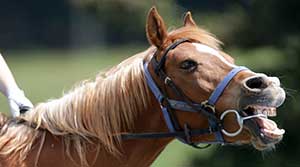
by Jochen Schleese
It’s no secret that redheads have sensitive skin. But the interesting thing is that chestnuts also have the most sensitive skin in the horse world.
As everyone knows, the skin is the largest organ of the body. (Somehow this never seemed to make sense intuitively, because to me an organ is an organ, and skin is skin, but there you have it!) That’s why creams are so readily absorbed into the blood stream and can quickly work how and where they’re supposed to. The skin is also the first line of defense against painful pressure and the skin is subject to changes that can be assessed in the evaluation of pain.
It is known that the fascia of the thoracic region (the region where the saddle is placed, also referred to as the saddle support area) is extremely sensitive to pressure and pain due to a richly innervated connective tissue web associated with the spinal cord. This is in contrast to the fascia overlying the lumbar region, which is generally more pliable and less sensitive to pain and to excessive pressure.
Read more: Only Skin Deep? That Old Chestnut of Saddle Fitting – and Chestnut Horses
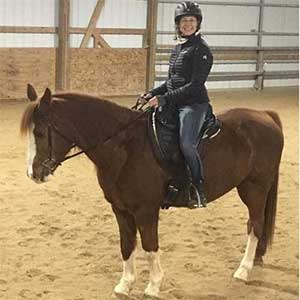
by Sarah Crampton
When Barefoot Treeless Saddles work, they really work. Barefoot Saddles USA received a call from a customer who was literally at her wits end trying to find a saddle to fit her older Arabian. After trying numerous saddles for over two years, she decided to give the Barefoot Cheyenne Treeless Saddle a try.
At Barefoot Saddles USA we ask for a photo of your horse. A full side view, weight on all four feet, head in a natural position taken on level ground is a very useful photo for helping to determine saddle fit. As you can see in the photo, the Arabian has a pretty prominent wither and a back that drops away from the wither.
This conformation can be a challenge for fitting any saddle, tree or no tree, as it’s difficult to get enough wither clearance and at the same time get the saddle level so the rider will sit in the center and be balanced.
Next, we ask that you print out the pommel measuring guide to see how your horse will compare to the different size pommels available – narrow, standard/medium, wide and extra wide. There are some horses that are so wide; they need the soft pommel to allow the saddle to spread as wide as the horse. This Arabian measured between a medium and wide pommel. In this case, we recommended trying the medium standard pommel because of his prominent withers.
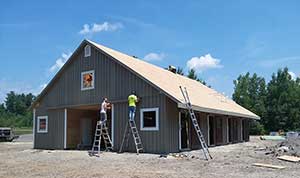
by Nikki Alvin-Smith
Investment in a new horse barn is a considerable capital expense. The building project provides much excitement and keen anticipation, but if you’re not careful, it can also cause you some major headaches. Issues can occur during the building phase or down the road, especially if products utilized are defective or the structure has not been properly constructed or set up on site.
So logically, you would expect that anyone purchasing a new horse barn would look carefully for a builder that offers a solid guarantee of their workmanship and provides full disclosure of the products that will be incorporated into the structure and provides the manufacturer’s warranty information.
Amazingly, many folks simply overlook the importance of the warranty altogether. The builder may offer a written estimate or quotation for the materials and labor, or an all-in price for the barn, but there is nothing in writing that evidences any kind of warranty.
Here’s a few things you most definitely should insist upon before you sign up for a new building. It doesn’t matter whether you are purchasing a stick-built structure on site or buying a modular barn. Please be smart and don’t overlook these factors:
- All materials and components of the building should be covered with a specified warranty period. This should include everything from roof shingles or metal roof to all fasteners and hardware.
- A full manufacturer’s warranty for specialist products such as trimboard and OSB board should be provided in detail.
- The contract should define what remedial action the building company will take should any product be defective and define how long their guarantee for free repair will last and also provide a timeline for repair or restitution.
- The building company should warranty all aspects of their craftsmanship in the structure, including any that they have subcontracted, with a detailed procedure for remedy.
- Equilume research shows Blue Light reduces bacterial and fungal growth
- An Old Horse Barn is Transformed into a Guest House
- Planning for a Hobby that Costs Almost as Much as Children
- Protecting Your Ideas: Can You Do It with Copyright and Trademark Law?
- Is There a Difference Between a Mule Saddle and a Horse Saddle?
- Is a Treeless Saddle Right For You?
- The Panache Pergolas and Pavilions Add to A Horse Farm
- Arena Footing Basics 101
- A Niche in Time - Smucker Harness
- Joey Jemison and the Legacy of the Fort Worth Cutting Saddle








